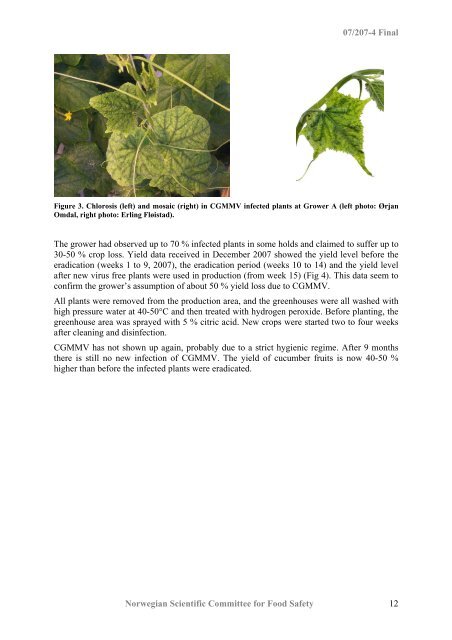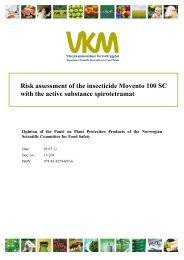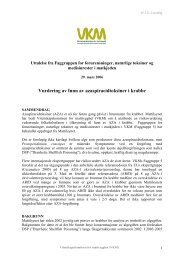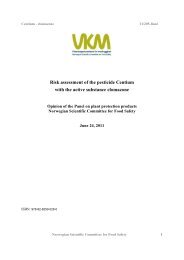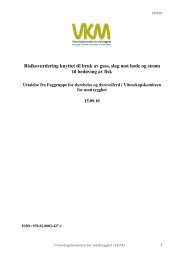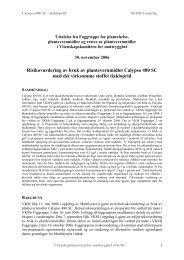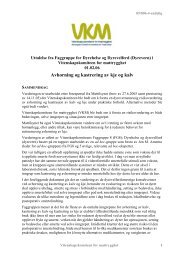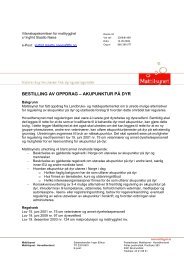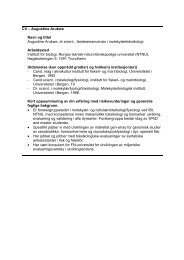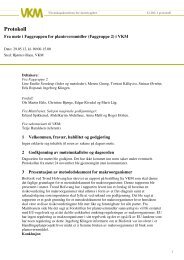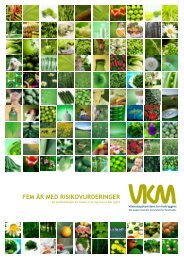Pest risk assessment of the Cucumber green mottle
Pest risk assessment of the Cucumber green mottle
Pest risk assessment of the Cucumber green mottle
You also want an ePaper? Increase the reach of your titles
YUMPU automatically turns print PDFs into web optimized ePapers that Google loves.
07/207-4 FinalFigure 3. Chlorosis (left) and mosaic (right) in CGMMV infected plants at Grower A (left photo: ØrjanOmdal, right photo: Erling Fløistad).The grower had observed up to 70 % infected plants in some holds and claimed to suffer up to30-50 % crop loss. Yield data received in December 2007 showed <strong>the</strong> yield level before <strong>the</strong>eradication (weeks 1 to 9, 2007), <strong>the</strong> eradication period (weeks 10 to 14) and <strong>the</strong> yield levelafter new virus free plants were used in production (from week 15) (Fig 4). This data seem toconfirm <strong>the</strong> grower’s assumption <strong>of</strong> about 50 % yield loss due to CGMMV.All plants were removed from <strong>the</strong> production area, and <strong>the</strong> <strong>green</strong>houses were all washed withhigh pressure water at 40-50°C and <strong>the</strong>n treated with hydrogen peroxide. Before planting, <strong>the</strong><strong>green</strong>house area was sprayed with 5 % citric acid. New crops were started two to four weeksafter cleaning and disinfection.CGMMV has not shown up again, probably due to a strict hygienic regime. After 9 months<strong>the</strong>re is still no new infection <strong>of</strong> CGMMV. The yield <strong>of</strong> cucumber fruits is now 40-50 %higher than before <strong>the</strong> infected plants were eradicated.Norwegian Scientific Committee for Food Safety 12


